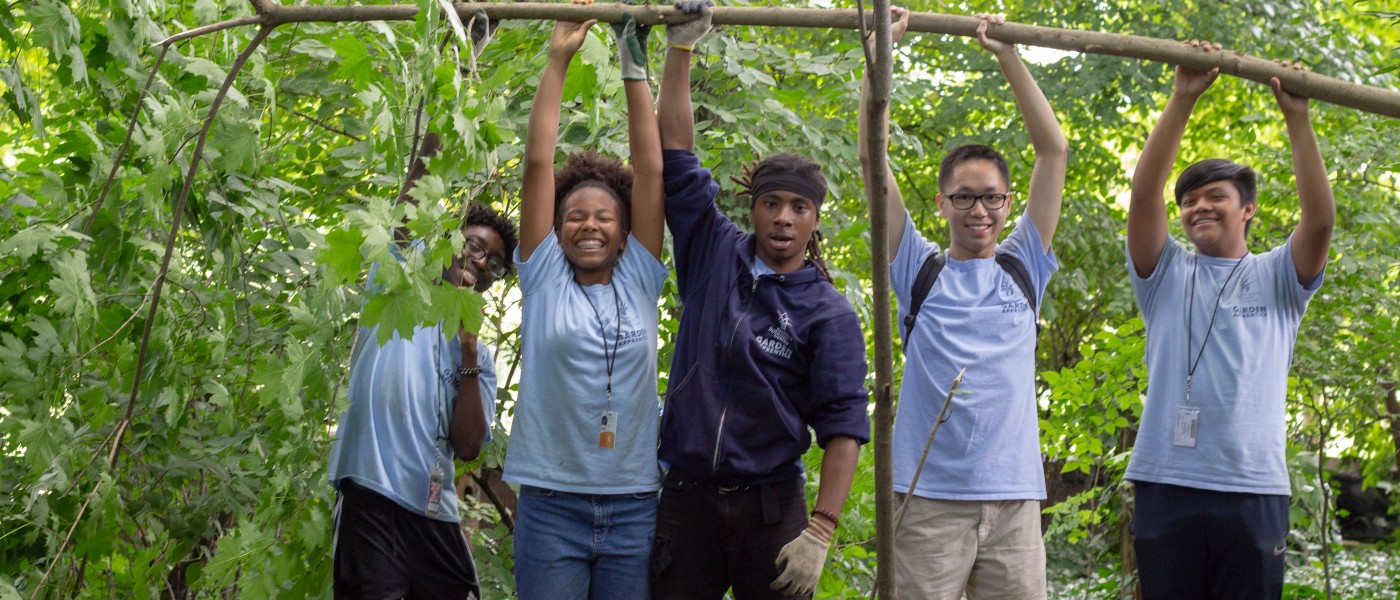GAP Teens Take Environmental Action
In Brooklyn Botanic Garden’s Garden Apprentice Program, we work with 55 of the kindest, most engaged teens you’d ever hope to meet. The nine-month apprenticeship program was founded over 15 years ago with the goal to guide New York City youth to become leaders in urban agriculture, science, and the environment. Garden apprentices help to teach in the Children’s Garden and the Discovery Garden, create their own exhibit carts, and conduct science research projects. For many years, one central component of the curriculum was called Environmental Issues. Students would study one topic in environmental science for six weeks and debate that issue at the end of the summer.
Three years ago we decided to reimagine Environmental Issues as Environmental Action. If the goal is to train youth to become leaders in environmental science, we want these students to learn their own agency—not just to discuss environmental issues theoretically, but to make real change at the local level.
The new Environmental Action curriculum teaches them to identify a local environmental problem, interview and assess the needs of a community partner, come up with an achievable action plan, and then make it happen on budget and on time. In six weeks. It’s an ambitious goal, but we’ve been seeing some pretty great results so far.
For the first two years, we partnered with Lefferts Historic House in Prospect Park just across Flatbush Avenue. Their staff identified two problems that our apprentices could help with. The first centered on accessibility. Lefferts House holds planting programs, and they needed a system to allow visitors with limited mobility to access the planting beds. Our teens designed and built three raised beds for the site. The teens were delighted to use power tools, and the Lefferts staff were pleased that the beds were sturdy, attractive, and, best of all, included a rat-proof metal mesh liner. “My favorite part of GAP overall was building raised beds, because we actually contributed to a community organization,” Taylor Bluestine wrote at the end of the year. “And I’m proud I learned how to use a saw,” added Ariana Bell.
The second year, Lefferts staff said they needed help with invasive and aggressive weeds on the property. Our apprentices surveyed the site and identified the worst offenders: pokeweed, Norway maples, and burdock. They not only pulled those weeds but in a “teach a man to fish” move, created a weed identification field guide specific to the site. In a training session for Lefferts staff, they presented a rap about pokeweed toxicity including all of the colorful and scatological symptoms you would experience if you were to eat it.
Now in our third year, this time the teens picked their own project. After much consideration, they chose to study food justice and access through the lenses of cost, environmental impact, and labor. They visited farmers’ markets, and spent a day working at the West Harlem Community Kitchen Food Pantry.
The apprentices also partnered with Memorial Sloan Kettering Cancer Center’s Food to Overcome Outcome Disparities (FOOD) program, which runs a network of food banks at local hospitals. In one study, 61 percent of patients seeking cancer treatment reported that they were food insecure during their treatment, and the students learned that those patients often have worse treatment outcomes than those who have enough healthy food to eat.
The hospital food banks, like most food banks, have particular trouble keeping perishable produce in stock. To help provide fresh, healthy vegetables, GAP and the Children’s Garden donated over 500 pounds of produce grown in our beds to MSKCC’s food banks.
Garden apprentice Metchersa Smith said that Environmental Action has been the most engaging part of GAP so far, “because I am developing an interest in food action.”

